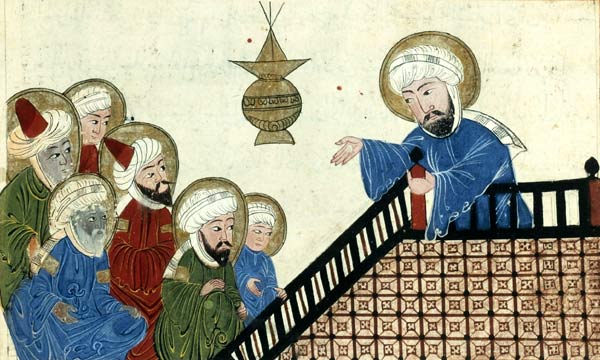
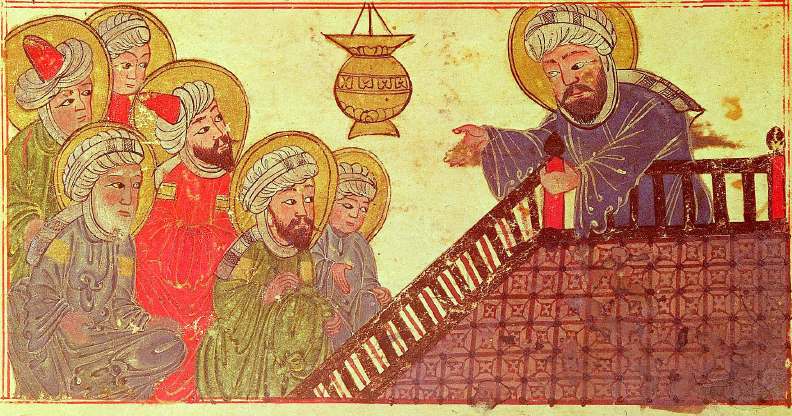
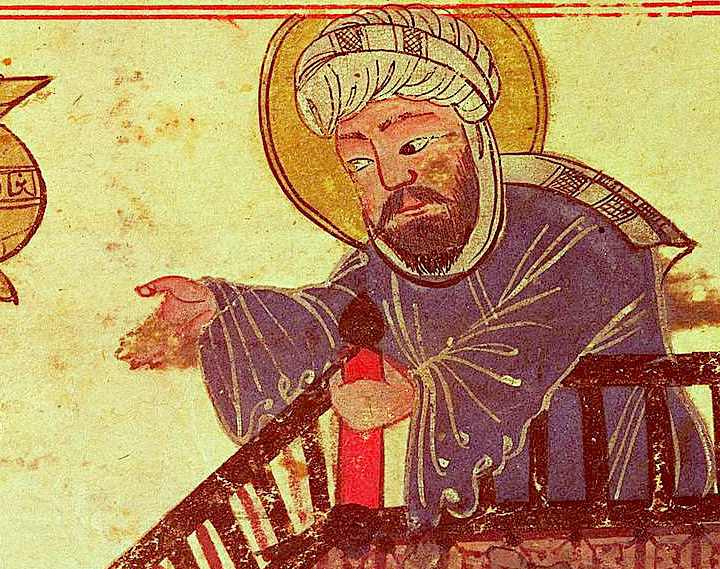
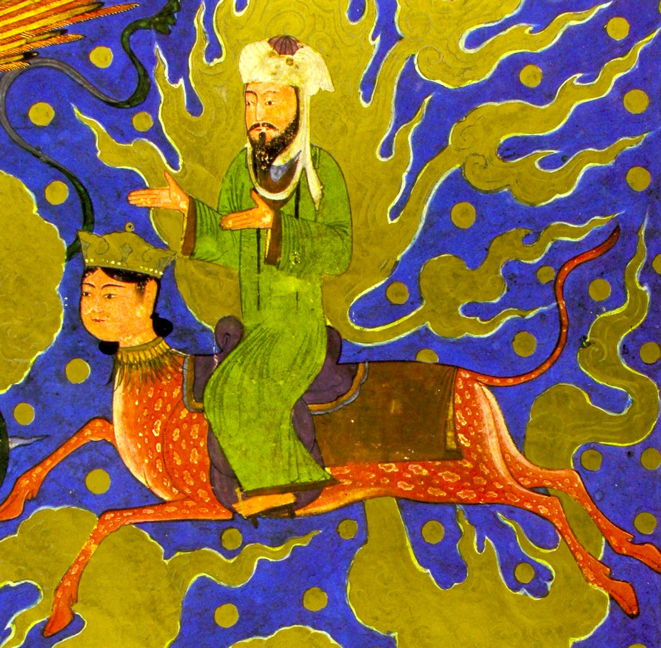
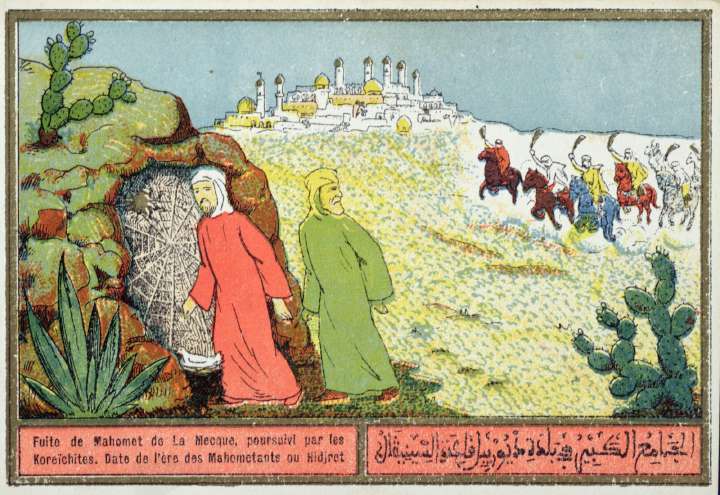
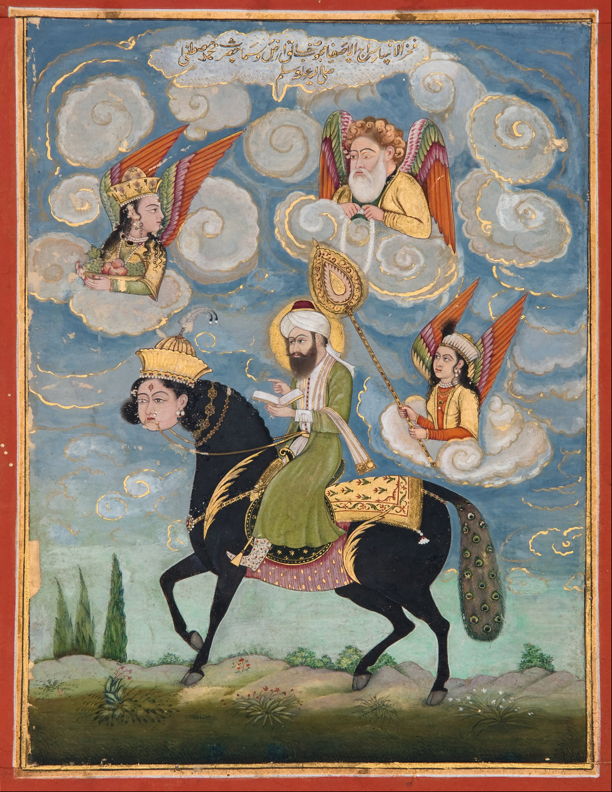

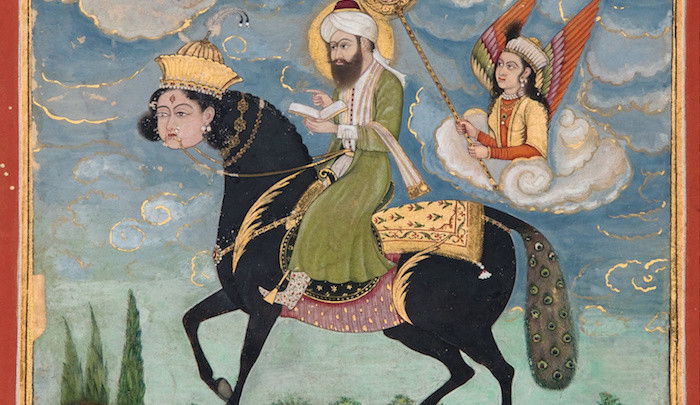

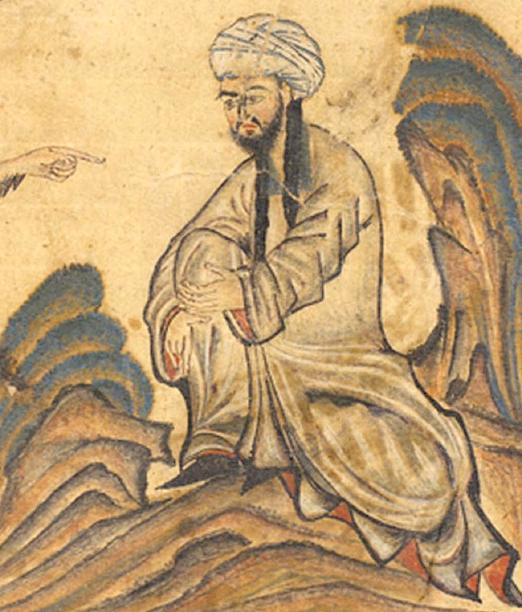
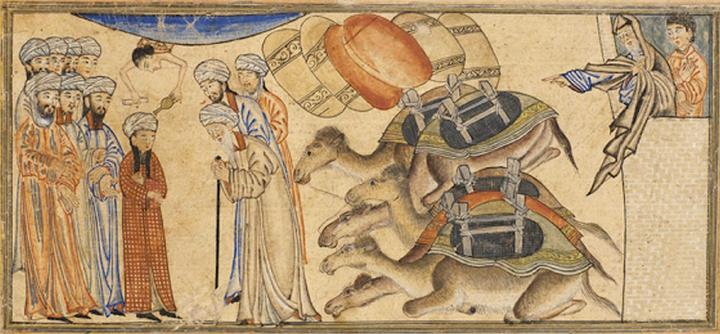
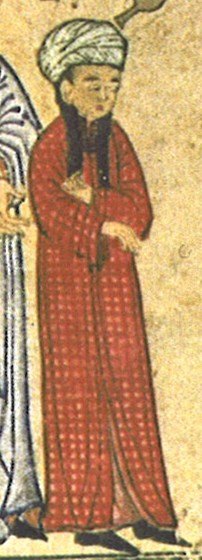
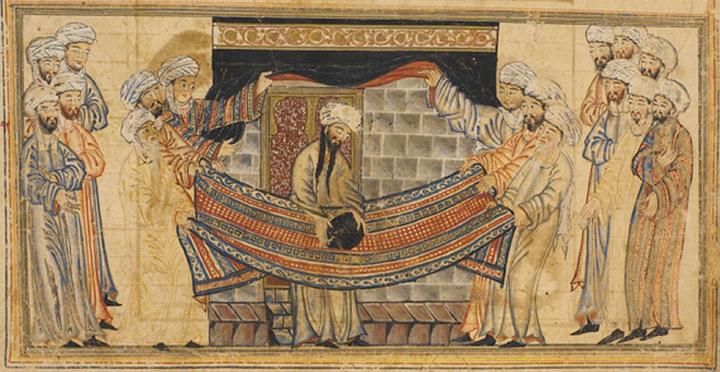
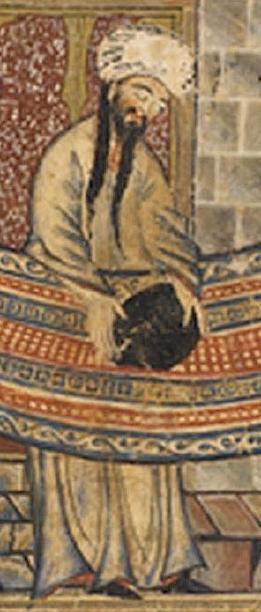
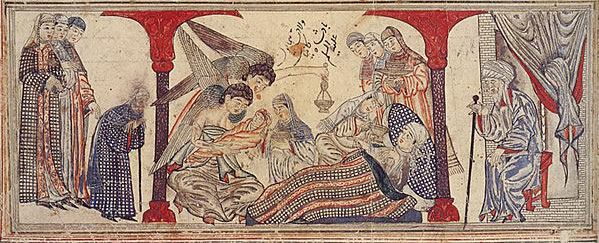
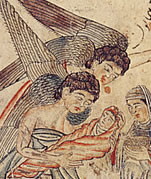

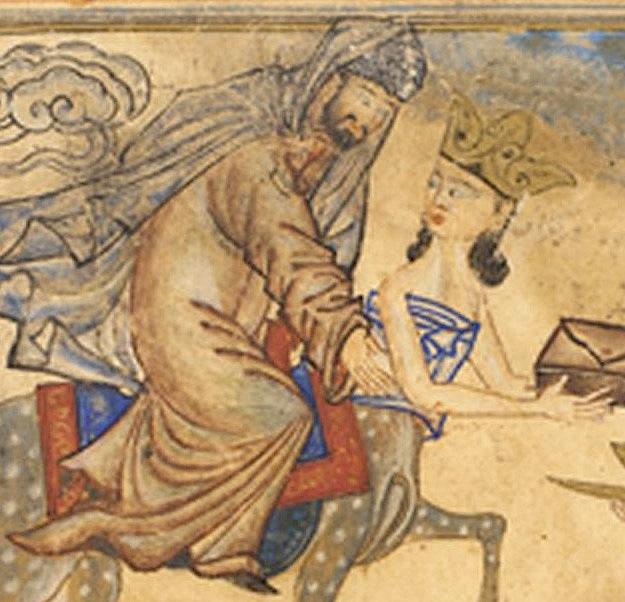
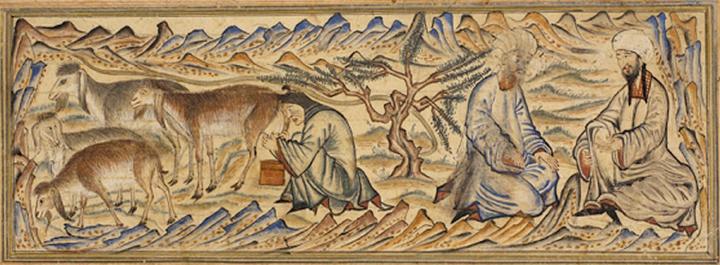
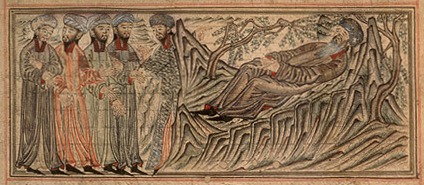
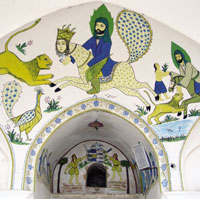
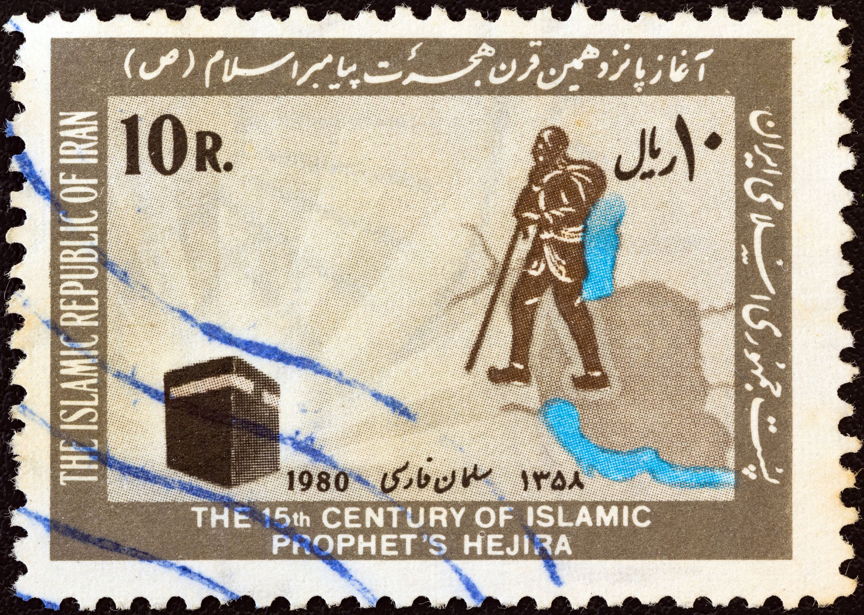
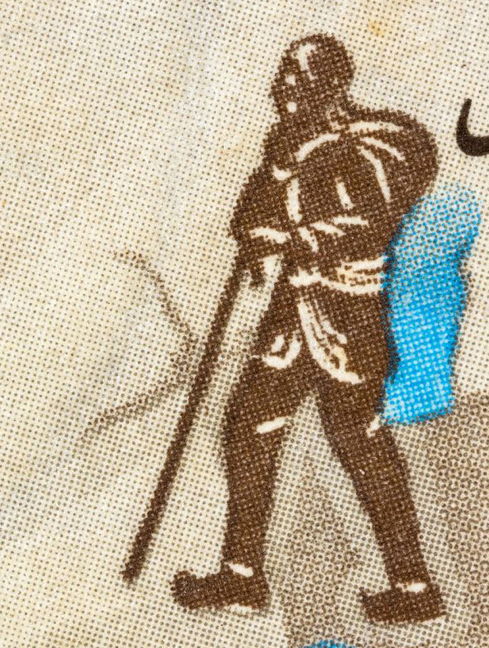
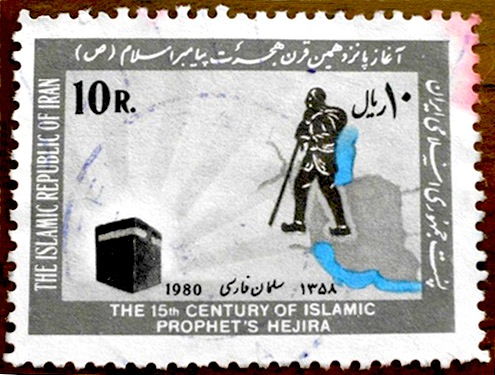
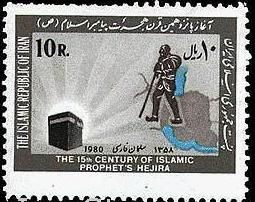
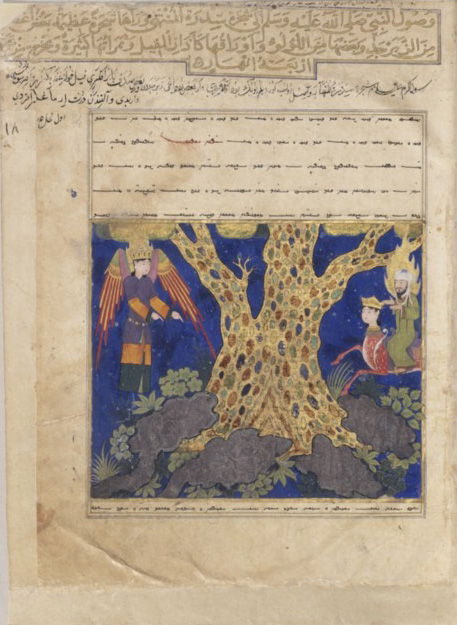
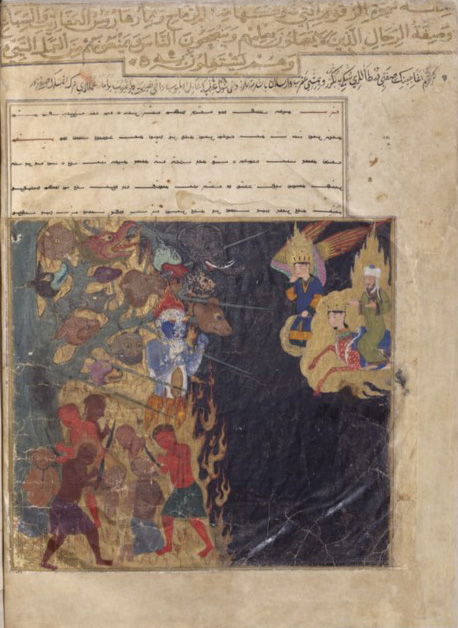
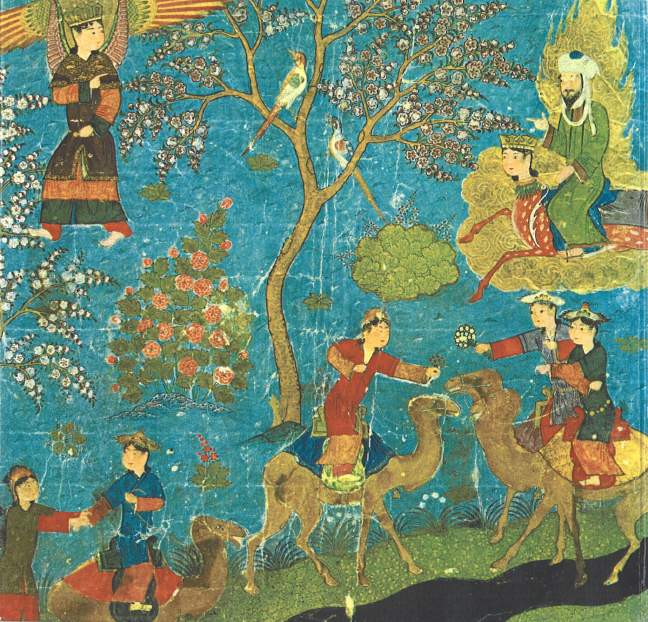
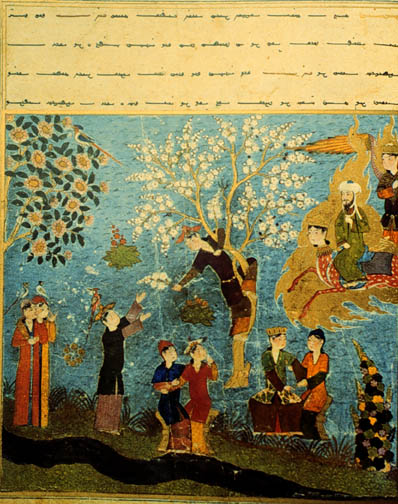


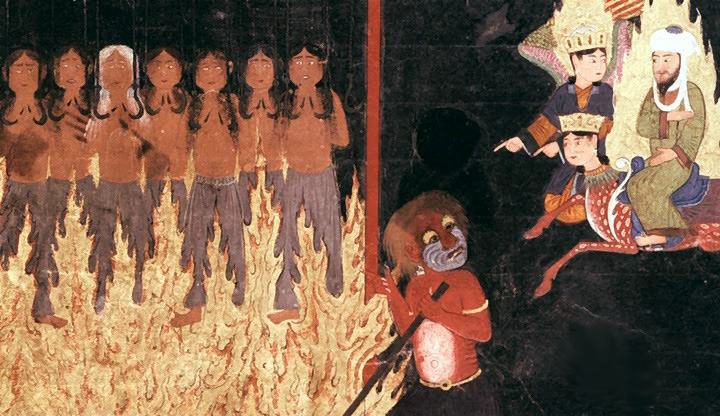
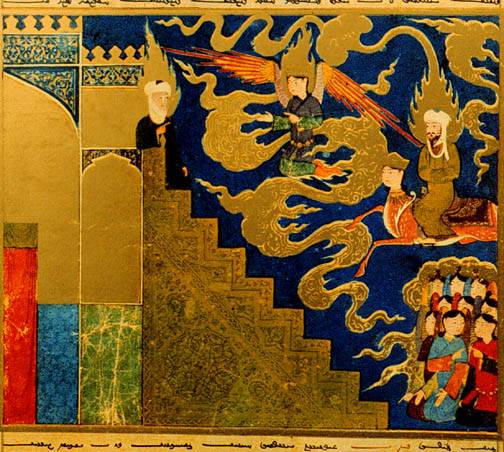
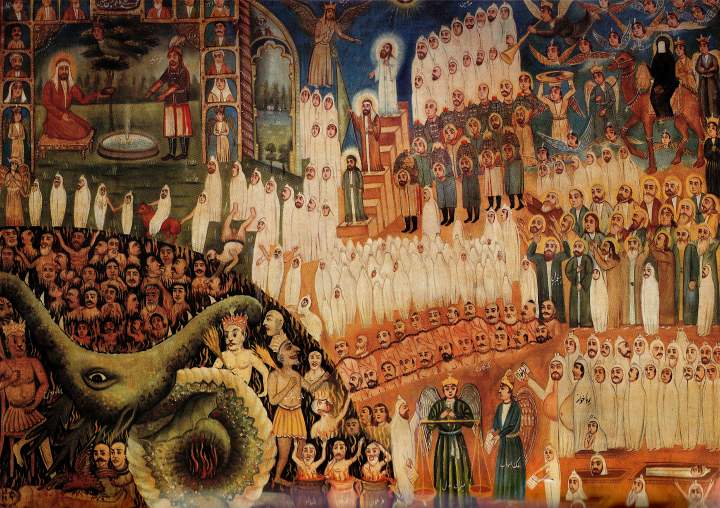
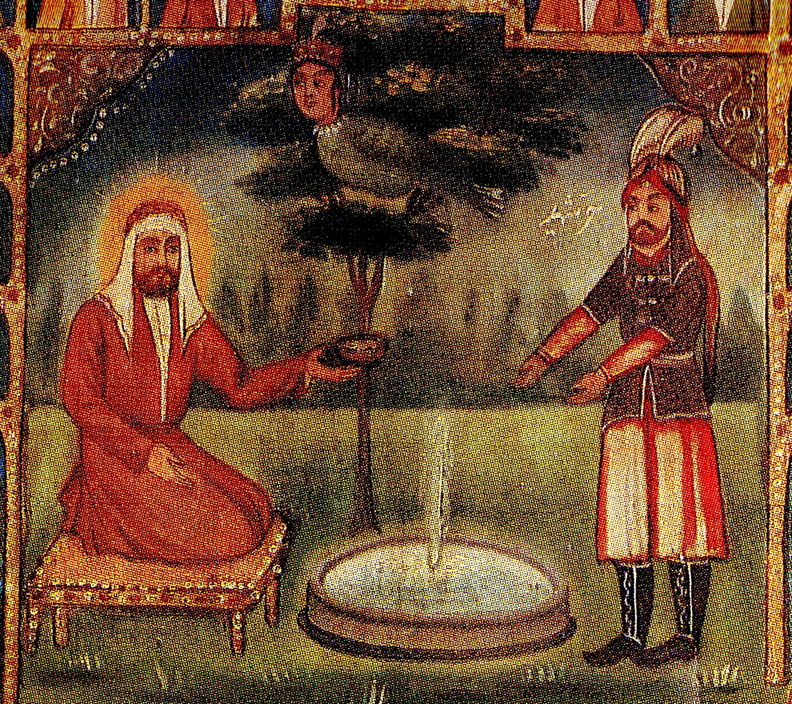
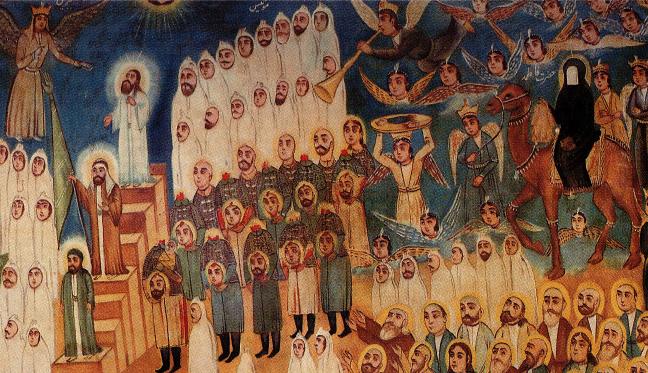
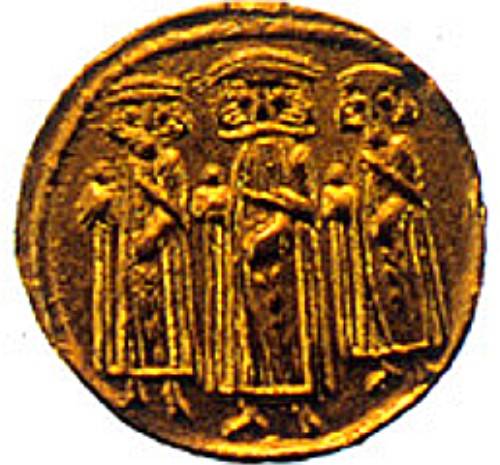
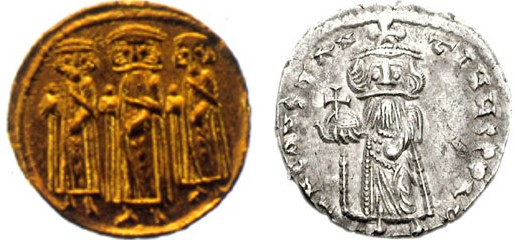
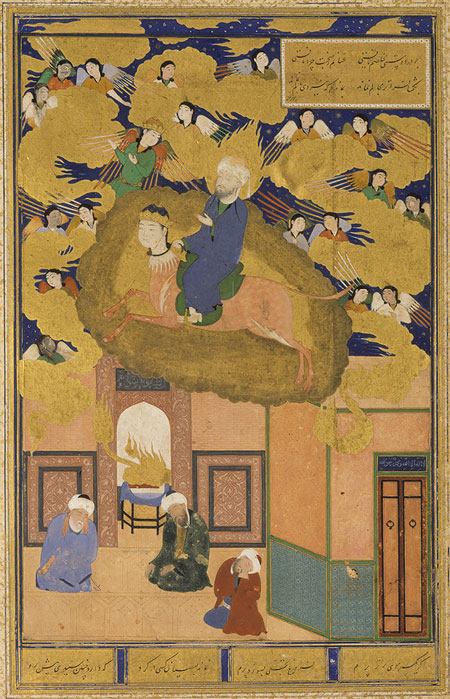
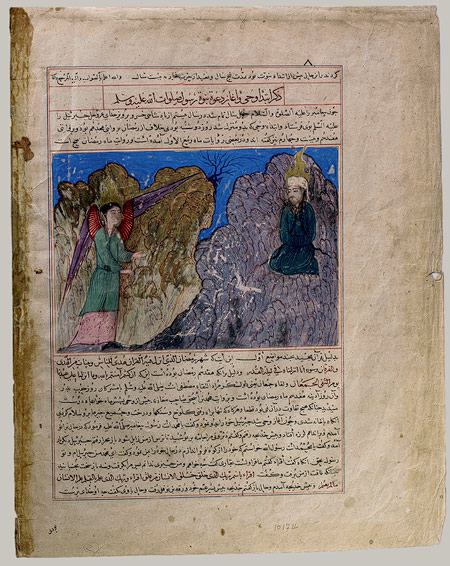
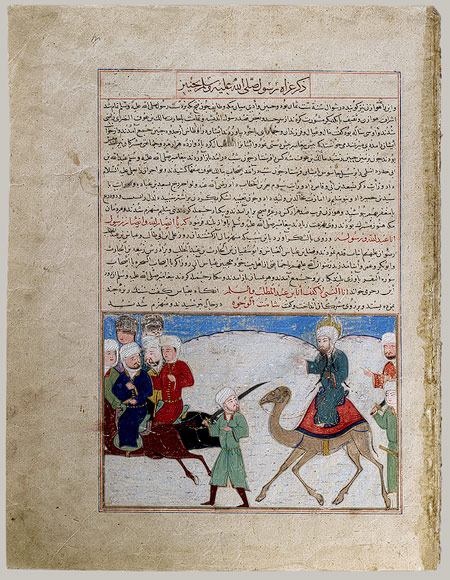
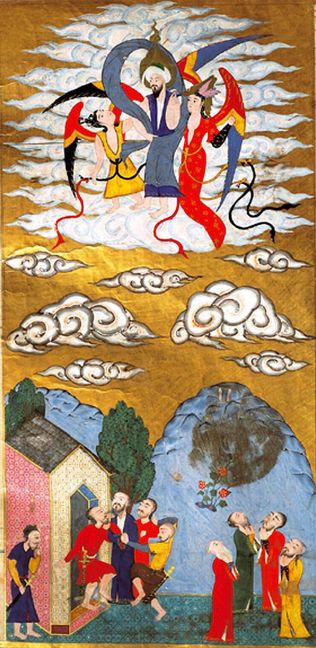
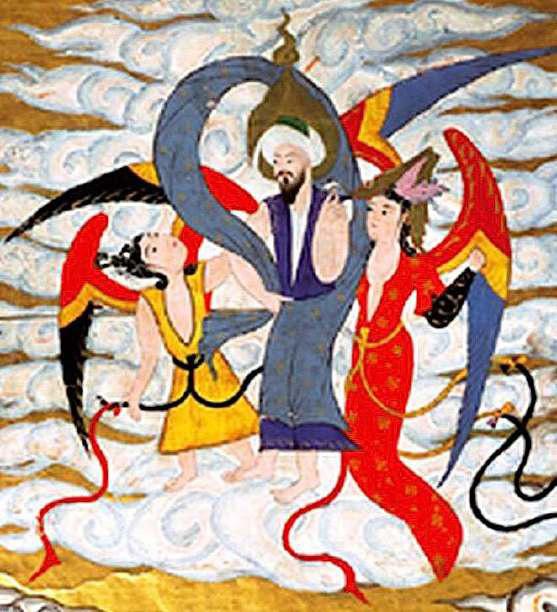
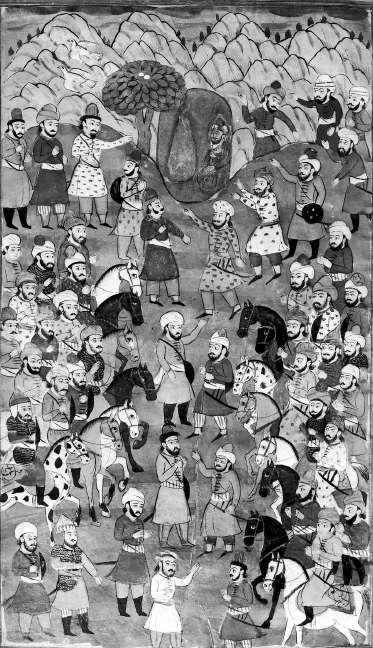
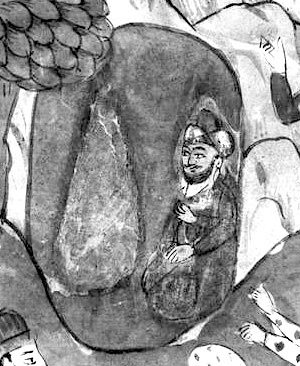
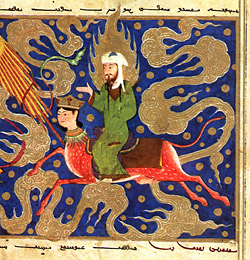
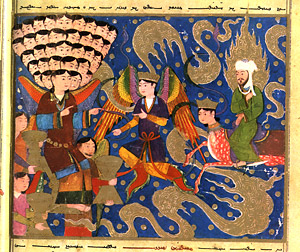
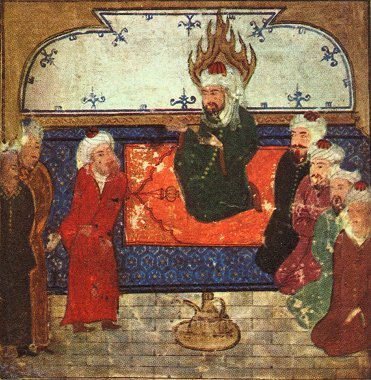


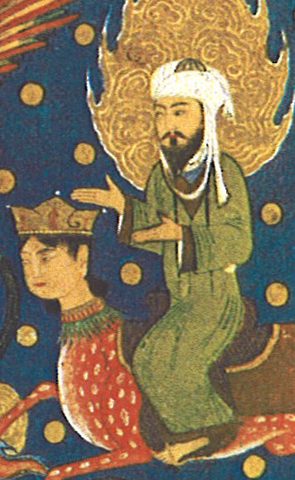
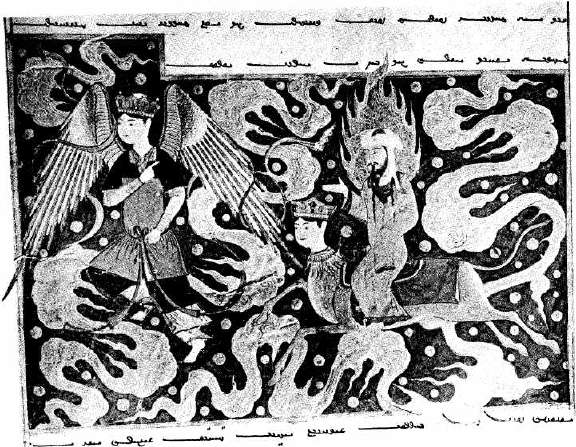
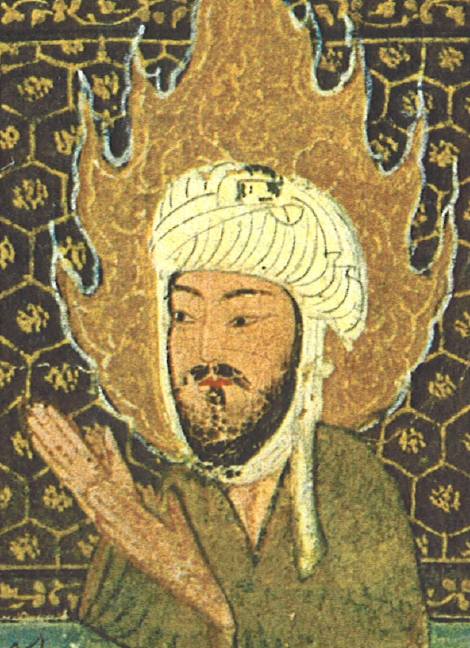
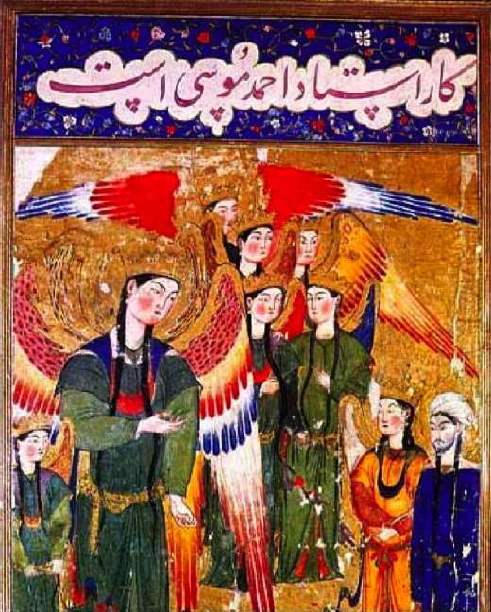
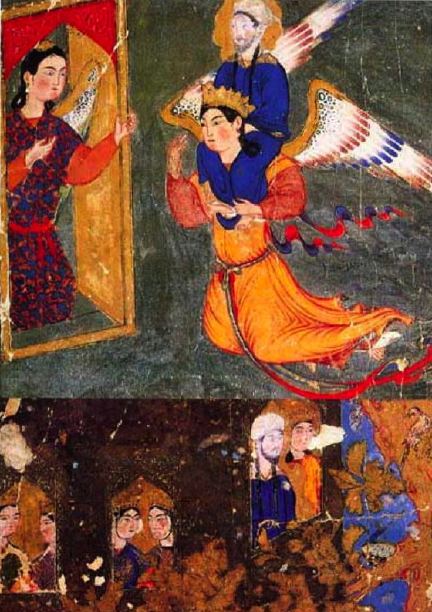
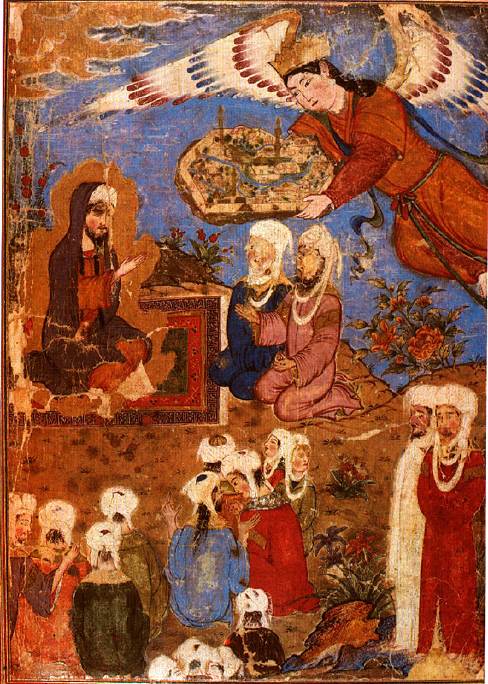
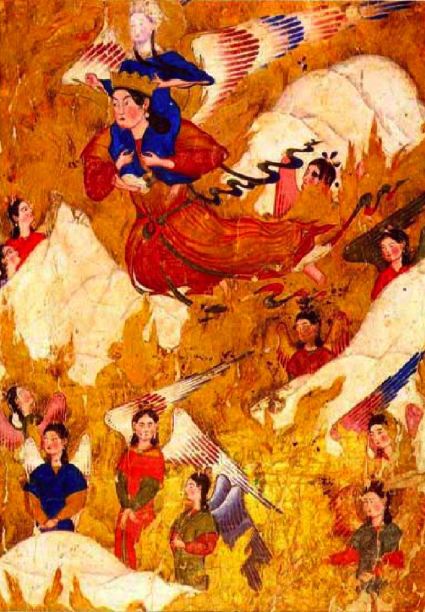
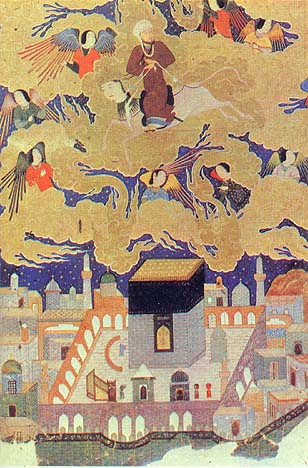
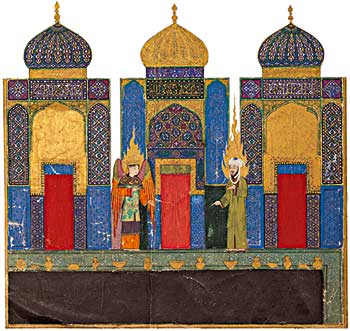
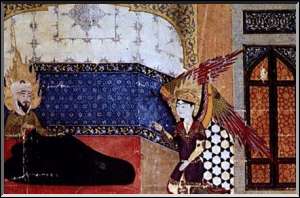
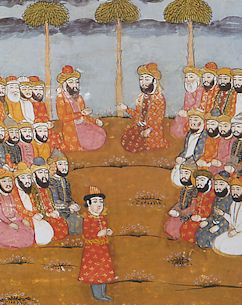
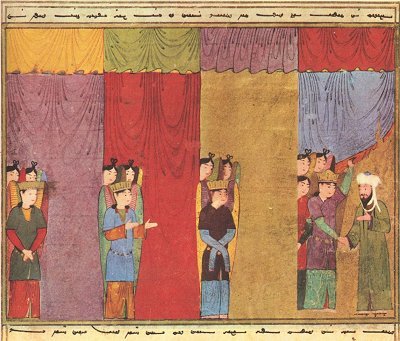
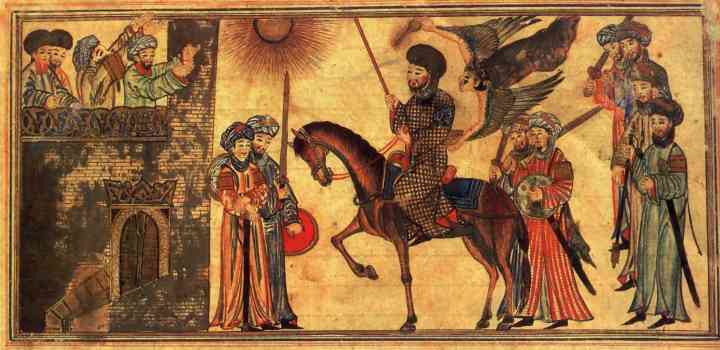


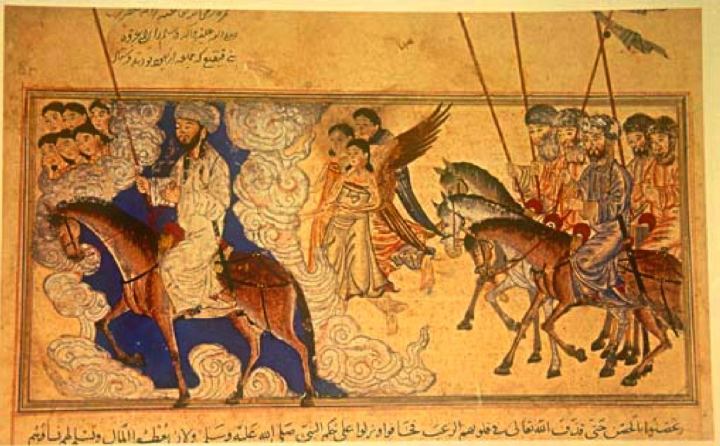
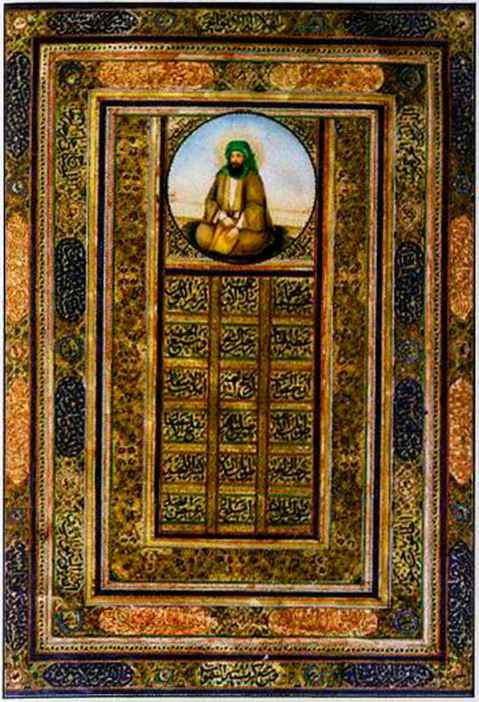
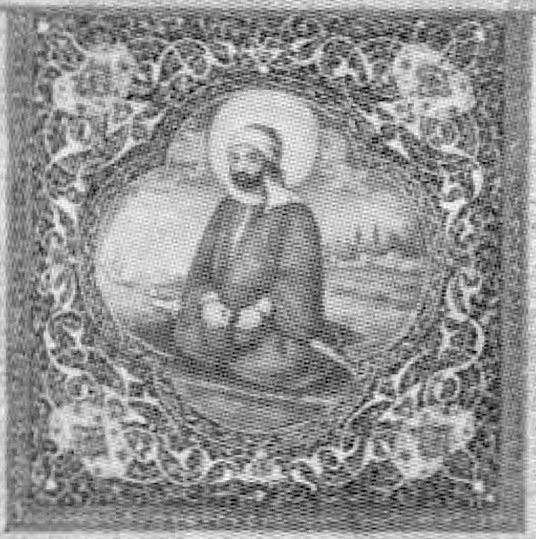
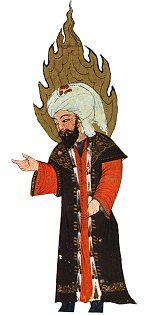
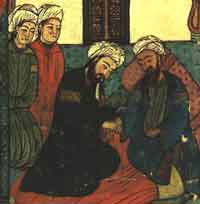
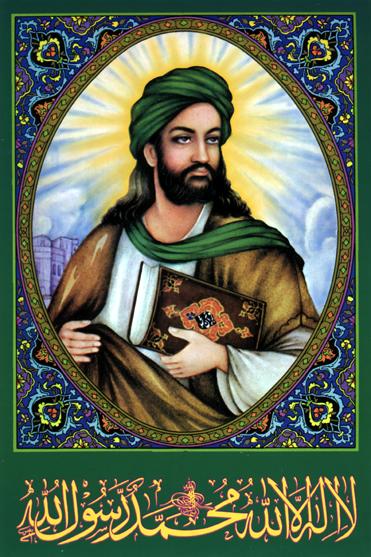 In modern Iran it is not uncommon to encounter -- either on posters or as framed pictures -- Islamic religious icons depicting Mohammed as a comparatively young bearded man with a green turban, usually clutching a Qur'an. Some of these icons have found their way online; the source for most of them, including the one shown above, is this authoritative page posted at the University of Bergen site (original Norwegian-language version here) which displays and describes religious posters and images purchased by Norwegian scholar Ingvild Flaskerud in Qum, Iran in 1999. The caption for the image shown here at the University of Bergen site says:
In modern Iran it is not uncommon to encounter -- either on posters or as framed pictures -- Islamic religious icons depicting Mohammed as a comparatively young bearded man with a green turban, usually clutching a Qur'an. Some of these icons have found their way online; the source for most of them, including the one shown above, is this authoritative page posted at the University of Bergen site (original Norwegian-language version here) which displays and describes religious posters and images purchased by Norwegian scholar Ingvild Flaskerud in Qum, Iran in 1999. The caption for the image shown here at the University of Bergen site says:
Islam's prophet Muhammad ibn Abd Allah. ... While some Muslims hold beliefs that it is against Islam to make images of the Prophet, others have more relaxed attitudes, and among Shia Muslims, such pictures are common, and much liked. According to Iranian informants interviewed by Ingvild Flaskerud, such portraits should not be considered "real" portraits of the prophet Muhammad. The artists make these images on the basis of conventional ideas of the character of those personages depicted, in the same way it has been done with Biblical figures in European art. The text below the image is the shahada or Profession of faith: "There is no god but Allah, Muhammad is His messenger."Needless to say, the excuse cited above (that these don't count as "real" Mohammed portraits because they are not photographically accurate but instead are stylized representations based on the popular notion of what he may have looked like) is absurd, and by that definition all portraits of everyone who lived prior to the invention of photography are spurious.
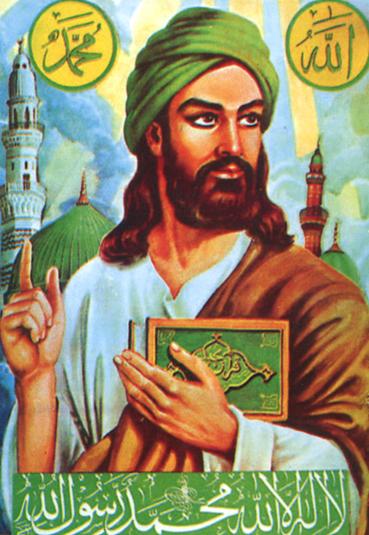

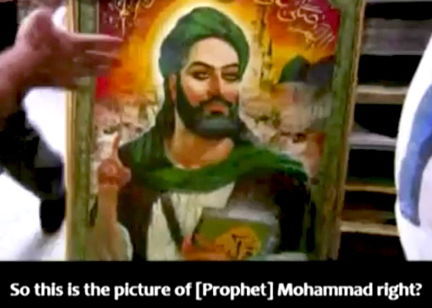
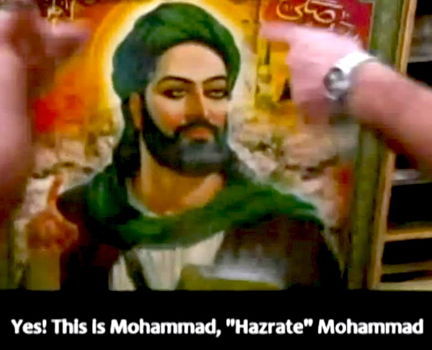
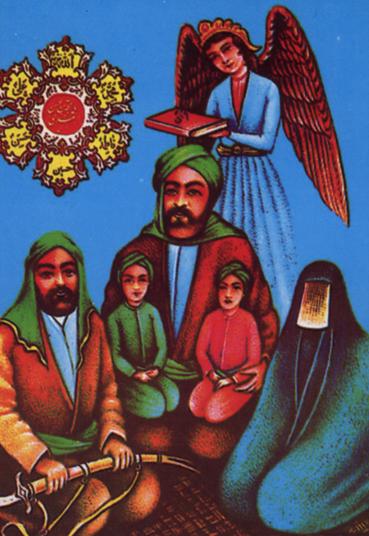
Picture depicts Muhammad in the middle with his veiled daughter Fatima to his left, his cousin and son in law Ali on his right hand, and grandchildren, Ali and Fatima's two sons, Hasan (in green) and Husain (in red). "The holy family" has a high position among all Muslims, but especially among Shia Muslims. Their names are written in the rosette to the left, top says "Allah", then follow clockwise: Muhammad, Fatima Husain, Hasan and Ali. ... Behind Muhammad is the messenger Djibril (Gabriel) with Quran in his hands. ... On this as on other pictures of Ali, he keeps one of his characteristics in his hands, sword [Zulfiqar] with the characteristic double header.These icons of Mohammed rocketed to momentary fame in early 2006 when at the height of the uproar over the "cartoon crisis" the Danish newspaper Jyllands-Posten linked to the previously obscure University of Bergen site to prove that Muslims themselves often depict Mohammed, debunking the trumped-up claim that there is a universal taboo against such representations. The article at Jyllands-Posten was, however, subsequently deleted, although the Bergen source page remains online to this day.
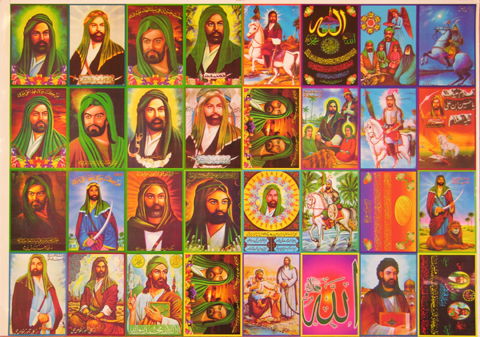



In certain reference works and books about Islam, we may come across the claim that even if the Prophet Muhammad was represented in pictorial form in earlier times, no pictorial representation of Him is permitted in our times. This reflects the state in Sunni areas, where images of the Prophet are rare. In Shia Islam, however, the situation is different, and pictures of the Prophet are quite common. These two pictures come from [Shia Muslims in Iran and] Alevis in Turkey. (Although Alevis emphatically state that they are not Shia Muslims, there are historical and other connections between the two forms of Islam.) In both pictures, the Prophet is holding the Koran in his hand. ... His raised index finger in the lower picture underlines the unity of God. (Purchased in [Iran and] Turkey.)Lastly, there are two depictions of Mohammed which were uploaded to the University of Bergen server but which are not discussed or displayed anyhwere on their "Muslim devotional posters" site and for which there is absolutely no attribution or information:
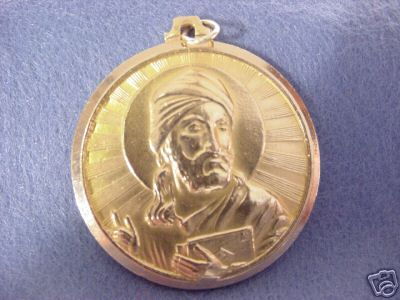
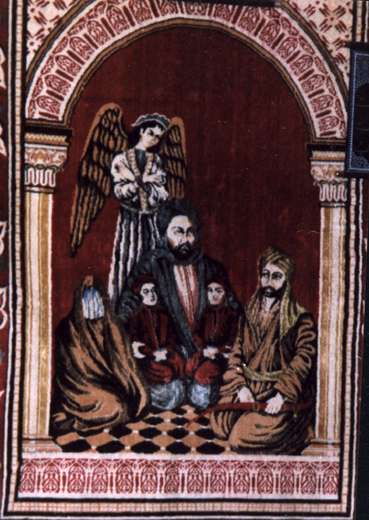
| Mohammed Image Archive home page |